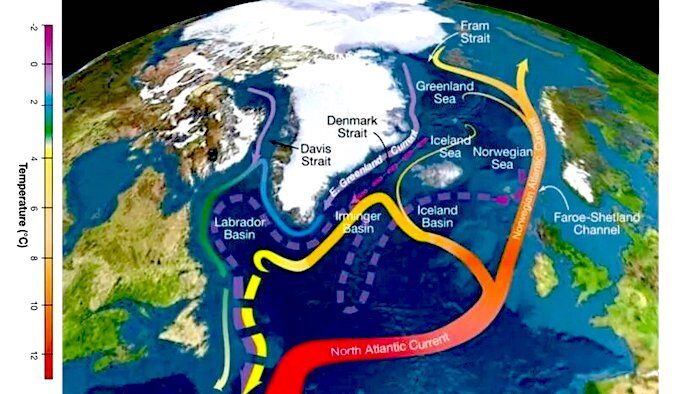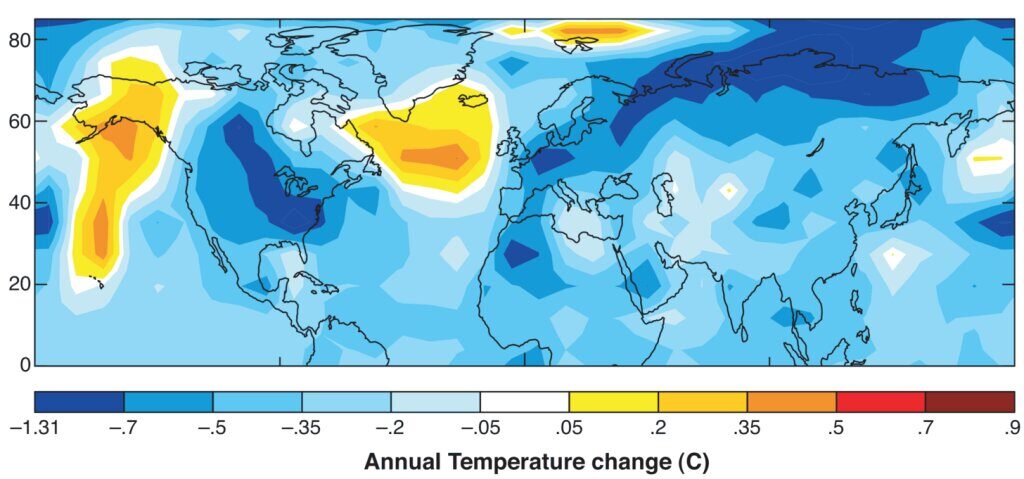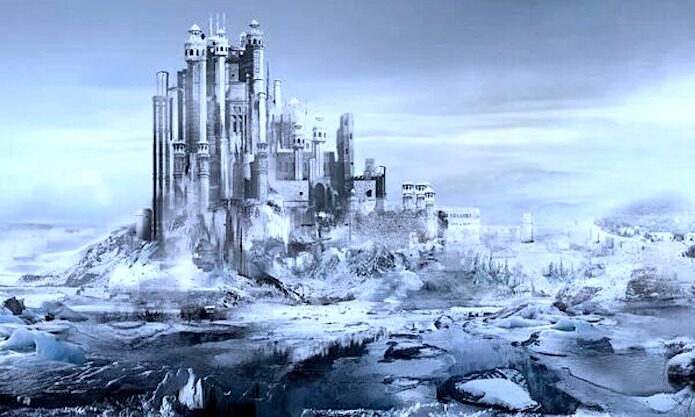As reported by MSN, following an era known as the medieval warm period - so that did exist then...? - temperatures in Europe in the early 15th century plunged in what has become known as The Little Ice Age (LIA).
This remarkable multicentennial period of cold brought increased glaciation to the mountains, an expansion of sea ice, crop failures, famines and disease across the European continent. Flip-flopping summers - with extremes at both ends of the spectrum - were chased by brutally harsh winters, during which rivers and canals routinely froze over. In the UK, for example, the first River Thames "frost fair" was held in 1608, and was an almost annual occurrence until the last one in 1814 - so before the AGW Party's proposed date for the start of the industrial revolution (≈1880) when global temperatures supposedly began climbing due to increasing CO2 emissions ...[one day we'll laugh]...
There are, as there should be and as is healthy, numerous potential explanations for what caused temperatures to plummet during the LIA. Top of the list are heightened levels of volcanic activity, reduced solar activity, and even the impact of the black death reducing the human population - Bill Gates' fave.
But scientists at the University of Massachusetts believe they have found a "new" key factor in why temperatures plunged to their coldest in 10,000 years - and they're pretending like it hasn't already been covered by 'alternative' outlets for years: "Surprisingly," the researchers say, "the cooling appears to have been triggered by an unusually warm episode."
The "discovery" came after Lead author Francois Lapointe, a postdoctoral researcher and lecturer in geosciences at the University of Massachusetts, and Raymond Bradley, distinguished professor in geosciences, also at the University of Massachusetts, came across new data suggesting a rapid change in sea temperatures.
Their previous work, which built a 3,000-year reconstruction of North Atlantic sea surface temperatures, revealed a sudden change from very warm conditions in the late 1300s to unprecedented cold conditions in the early 1400s, only 20 years later.
Using various sources to obtain detailed marine records, Dr Lapointe and Professor Bradley discovered there had been an abnormally strong northward transfer of warm water in the late 1300s which peaked around 1380. As a result, the waters south of Greenland and the Nordic Seas became much warmer than usual.
"No one has recognized this before," said Dr Lapointe...!?
The researchers explained that there is a transfer of warm water from the tropics to the Arctic. It's a well-recognized process called the Atlantic Meridional Overturning Circulation (AMOC), which can be likened to a planetary conveyor belt. When it is functioning normally, warm water from the tropics flows north along the coast of Northern Europe, and when it reaches higher latitudes and meets colder Arctic waters, it loses heat and becomes denser, causing the water to sink. This deep-water formation then flows south along the coast of North America and continues on to circulate around the world.

Worryingly, a startling-similar process appears to be underway today (there's something amiss with The Beaufort Gyre, too).
In recent decades, particularly during the the 1960s and 1980s, we've witnessed a rapid strengthening of the AMOC, a phenomenon linked with the persistently high pressure in the atmosphere over Greenland. Dr Lapointe and Professor Bradley believe that what's playing out now is the same atmospheric situation that occurred just prior to the Little Ice Age. But what could have set off that persistent high-pressure event in the 1380s? The answer, according to Dr Lapointe, can be found in trees.
The researchers compared their findings to a new record of solar activity revealed by radiocarbon isotopes preserved in tree rings, and discovered that unusually high solar activity was recorded in the late 1300s.
Increased solar activity tends to lead to high atmospheric pressure over Greenland. It also correlates with fewer volcanic eruptions, which means less ash is in the air — a cleaner atmosphere results in earth being more responsive to changes in solar output: "Hence the effect of high solar activity on the atmospheric circulation in the North-Atlantic was particularly strong," said Dr Lapointe.
But this is where the MSN article fails to offer any honest answers and/or comparisons to today. It trips up, likely due it having to adhere to a dogmatic narrative and dutifully tow the AGW Party line in order to have any chance of being published.
The article goes on to suggest that there isn't enough ice remaining in the Arctic to cause such an injection of cold water into the North Atlantic today - which is absurd; but then immediately contradicts itself with this quote from Dr Lapointe:
"We do have to keep an eye on the build-up of freshwater in the Beaufort Sea which has increased by 40 per cent in the past two decades. ... Climate models do not capture these events reliably and so we may be underestimating future ice loss from the ice sheet, with more freshwater entering the North Atlantic, potentially leading to a weakening or collapse of the AMOC."A collapse of the AMOC would plunge Europe and much of North America into ice age conditions almost overnight, and Dr Lapointe, at least to my mind, is a scientist warning of a genuine impending catastrophe - perhaps one about to be triggered by the release of The Beaufort Gyre, often referred to as the "ticking climate bomb".
What the MSN article also fails to mention is that those dates cited as being the beginning of the modern strengthening of the AMOC (1960s through 1980s) were decades of extraordinarily high solar output - the highest in thousands of years, in fact- and which culminated in the end of the modern Grand Solar Maximum (2007-or-so), so adding further support to the theory.
Also not addressed is NASA's longstanding research showing that while Earth's overall temperature trends colder during prolonged bouts of low solar activity (such as today's descent into the next Grand Solar Minimum, which likely commenced during Solar Cycle 24), not all regions experience the chill. As visualized in NASA's 'Maunder Minimum Reconstruction Map' (shown below), areas such as the Arctic, Alaska and the North Atlantic actually warm during spells of otherwise 'global' cooling.

Agreed.
One way or another, the COLD TIMES are returning, the mid-latitudes are REFREEZING - likely in line with historically low solar activity, cloud-nucleating Cosmic Rays, and a meridional jet stream flow (among other forcings, including the impending release of the Beaufort Gyre).
Prepare accordingly — learn the facts, relocate if need be and grow your own.




Comment: See also: